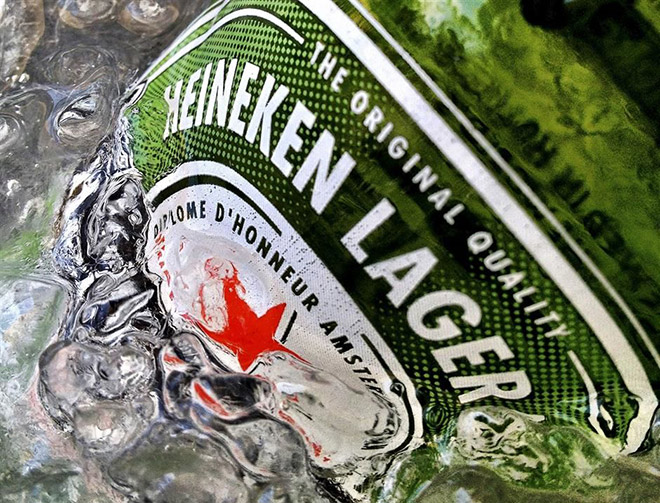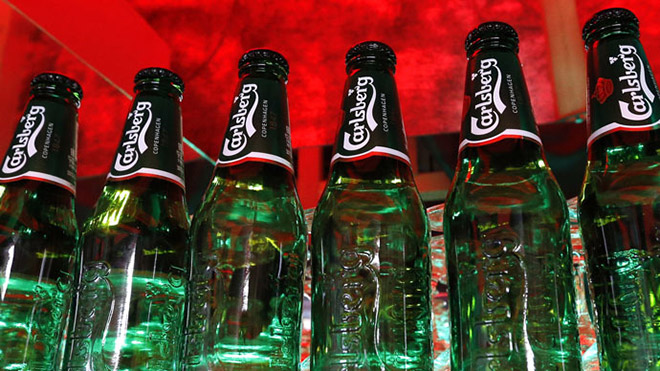 KUCHING: Good times are a-brewing for the malt liquor sector this year as a myriad of competitive events – such as the current Rio Olympics 2016 – bring the exact sentiment needed to propel malt liquor to the forefront.
KUCHING: Good times are a-brewing for the malt liquor sector this year as a myriad of competitive events – such as the current Rio Olympics 2016 – bring the exact sentiment needed to propel malt liquor to the forefront.
Analysts alike share this view. AmInvestment Bank Bhd (AmInvestment Bank) on June 28 maintained its overweight stance on the malt liquor market as we move into the second half of 2016 with buys on both Heineken Malaysia Bhd and Carlsberg Brewery Malaysia Bhd.
Both stocks, it said, have been reporting earnings which were within or above its and consensus estimates for the past few quarters, driven by growing volumes of malt liquor.
This was in spite of the Goods and Services Tax (GST) coming in more than a year back, in addition to a current downward trend in consumer sentiment.
According to the MIER, consumer confidence had plummeted to a record low of 63.8 points in 4Q15 since its initial 15-point dip in 4Q14. Although consumer comfort is still below the threshold of 100 points, nascent recovery was seen in 1Q16 as the index was up 9 points.
MLM volume growth sustainable
The strong performance by the brewers as highlighted was driven by the sustained growth in malt liquot market (MLM) volumes.
“We expect MLM volumes to continue growing in the low- to mid-single digits in the near-term,” AmInvestment Bank observed. “According to Heineken Holding NV – Heineken Malaysia’s parent company – beer consumption per capita in Malaysia is 5.8 litres and the domestic beer market size in 2015 was 1.8 million hectolitres.
“This growth momentum will be supported by world events. This year, two special world events occur, namely the UEFA EURO 2016 in France which ran from June 10 to July 10 and the Summer Olympics in Rio de Janeiro, Brazil from August 5 to 21.
“Historical data suggests that these events, especially the former, boost demand consumption considerablyby four to five per cent.
“That said, the unfavourable match times have prompted the brewers to concede that growth potential may be restrained, especially for on-trade sales, which, at 66 per cent, make up the bulk of MLM volumes.”
The research house predict MLM volumes to continue growing in the low-to-mid single digits in the near-term as in addition to the above-mentioned recovery in consumer confidence, this growth momentum will be supported by a step-up in advertising and promotional (A&P) expenditure.
“That said, we remain cognisant of ongoing threats to this MLM volume growth, namely the proliferation of contrabands/parallel imports and the negative correlation between price and volumes brought about by the revamp of the alcohol excise duty structure,” it forewarned, noting that excise duties were effectively raised by 10 per cent to 99 per cent beginning March 1 this year.
Regulatory uncertainties reduced
On a more positive note, the announcement of the excise duty reform together with other amendments – such as the change in minimum legal drinking age, health warning requirements for alcohol products and regulations on CHL – have essentially reduced the regulatory uncertainties surrounding the sector ahead.
The key changes, which were gazetted on May 27 include:
(1) raising the minimum legal drinking age from 18 to 21 effective 1 December 2017;
(2) a requirement for alcohol products to have health warnings, i.e. “Drinking alcohol is injurious to health”;
(3) a new rule for compounded hard liquor (CHL) to be packed in glass bottles with volumes being no less than 700ml; and
(4) the need for alcohol products to be displayed in a separate cabinet or shelf separate from those for food.
Failure to adhere to these laws is punishable by a penalty of a maximum RM10,000 or a jail term of up to two years.
“We do not expect these latest regulatory changes to significantly dent MLM volumes and the brewers’ earnings given that they have been largely expected and that there is sufficient time for implementation to reduce its impact.
“The most visible effect would be on the advertising and promotional (A&P) activities given that many of these are created and targeted at those from 18 years of age.”
Another impact would be the potentially higher costs from labelling changes.
“The new rulings for CHL are nonetheless welcomed given that they were previously unregulated. While the recent excise duty change would have resulted in a more equitable tax structure and hence more balanced pricing for alcoholic drinks, most of these products are either contrabands or parallel imports. Tougher requirements on their sale would help curb their spread.”
BizHive Weekly analyses the performance of Heineken Malaysia and Carlsberg in Malaysia:
Heineken a fine mellow brew

Heineken Malaysia Bhd (Heineken) fared better than expected in the second quarter of 2016 (2Q16) as beer consumption was boosted by the Euro 2016 football tournament held from June 10 to July 10.
The team at AmInvestment Bank Bhd (AmInvestment Bank) observed that Heineken’s revenue for the quarter was marginally higher on both quarterly and annual basis.
This came after the group announced its latest financial results last month.
The higher year-on-year jump may also be attributed to the lower base last year following the Goods and Services Tax implementation on April 1, 2015, it added.
“Heineken’s higher sales, coupled with more effective commercial spend and channel sales execution had translated into a quarter-on-quarter (q-o-q) and y-o-y net profit jump of 20 per cent and 38 per cent, respectively.”
Meanwhile, Kenanga Investment Bank Bhd (Kenanga Research) was buoyed by the excellent results which marked the eighth quarter in a row which Heineken Malaysia recorded y-o-y growth.
“We are also relieved as our positive call on the stock is justified with the Group continuing to grow earnings holistically with both top line and bottom line showing improvement despite the unfavourable market condition and subdued consumer sentiment,” it said in a note.
“Moving forward, we are hopeful of the sustainability of the growth momentum which will be supported by effective cost management and strategic brand-building or marketing activities.”
Being conscious of the challenging market outlook, TA Securities Holdings Bhd (TA Research) said the group will continue adopting effective commercial strategies and cost proficiency programmes.
“We also continue to be optimistic on the government’s efforts in bringing down contraband beer sales in the market. This will be a win-win situation for the beer industry and the welfare of Malaysia as a whole.
“There will be a new regulation to increase the Legal Purchasing Age for alcoholic beverages from 18 to 21 years, effective Dec 1, 2017. We are neutral on the development at this juncture.
“However, we believe any policy changes may drive consumers to easily available contraband beers.”
“With regards to the Bills of Demands amounting to RM56.3 million handed by the RMC to the group on August 28, 2015, TA research noted that Heineken remains firm on its stance that a retrospective application of the new excise duty valuation method implemented on November 1, 2013 is unjustifiable.
“At present, we understand that discussions are ongoing between both parties to resolve the dispute fairly. Accordingly, no provisions were recognised.”
Apart from that, the group is considering venturing into the non-alcoholic beverages segment and expects to realise it as early as next year. This move is to help mitigating the impact of excise duty on group’s profitability.
“Currently, the group only sells Malta as its non-alcoholic beverages. We are neutral on the development as no concrete plans disclose by the management. Besides that, with Ministry of Health currently studying the plans to implement sugar-tax to beverages producers, we remain cautious on the matter.
“After all, it may not be a strategic move as the implementation of sugar-tax will add on to production cost, which affect future profitability.”
Hong Leong Investment Bank Bhd (HLIB Research) noted that there is an observable shift in consumption behavior amongst consumers as modern off trade continues to make ground versus other channels – visibly impacting Heineken Malaysia.
“As expected, commencing July 1, prices increased by circa 2.5 per cent as the group passed on the full increase in the duty hike to consumers after having absorbed a portion of it since March,” it said in its research paper.
“To note, Guinness Foreign Extra Stout has had its ABV reduced from 6.8 per cent to 5.5 per cent in June in order to minimise the magnitude of the price increase due to the duty revision.
“We believe that given the strong results from Heineken and unperturbed beer consumption amid recent excise duty revision, we are wary that the brewery sector will be subject to another excise duty revision in the near term more so than the tobacco sector due to the latter’s excise duty induced downturn.
“We believe the group will continue to focus on growing momentum through targeted commercial initiatives, innovation and investment efficiencies. Whilst management didn’t commit to double digit returns in FY17, they believe that they are on the right footing to perform well in FY17.”
Culminating Carlsberg’s common strategy

Having had a tough 2015, Carlsberg Brewery Malaysia Bhd (CAB) was able to respond positively to market changes and successfully gratify the tastebuds of diverse segments of consumers with its portfolio of brands for effective revenue optimisation.
The year 2015 was an extremely challenging year. Malaysia’s gross domestic product (GDP) growth slowed to five per cent in 2015 compared to six per cent in 2014. The weaker economy also suffered the stresses of the plunge in global crude oil prices and the depreciation of the ringgit.
“Consumers also had to endure the impact of the new GST,” its chairman, Datuk Lim Say Chiong, said in its Annual Report 2015. “The overall adverse environment took a significant toll on domestic beer consumption, which was already affected by the continuing influx of contraband imported beers despite commendable efforts by the Royal Malaysian Customs to curb the problem.”
Meanwhile in Singapore – a big market for CAB – GDP growth declined to 2.1 in 2015 from 2.9 per cent in the preceding year. This was the island nation’s weakest annual growth since 2009, when its economy was hit by the global financial crisis.
“The Singapore beer market has been facing its own challenges. In early 2015, off-trade businesses in Singapore were impacted by the introduction of the Liquor Control (Supply and Consumption) Bill.
“Among others, the Bill restricts alcohol consumption in public places between 10:30pm and 7am, while retail shops have to stop selling alcohol after 10:30pm.”
Against the challenging backdrop in both countries, Lim noted that Carlsberg managed to strengthen its respective market presences in Malaysia and Singapore.
“As a result of our hard work, I am pleased to report that the brands in our portfolio maintained or enhanced their market positions in 2015. The year saw our flagship brand Carlsberg cementing its position as Malaysians’ most preferred beer.
“Our international premium brands Somersby Ciders, Kronenbourg 1664 and Asahi Super Dry maintained their strong momentum to grow market share, while our other brands continued to command strong consumer loyalty.”
Additionally, Carlsberg’s investments in tactical promotional activities for its premium brands Kronenbourg Blanc, Somersby Apple and Pear Ciders, Asahi Super Dry and the newly re-launched Connor’s Stout Porter have yielded positive returns; so has the activation of various consumer-faced promotions and sampling activities.
“Somersby Cider in particular has consistently outperformed the competition and is today the leading cider brand in Malaysia.”
Despite Heineken Malaysia’s larger domestic market share, AmInvestment Bank said CAB has been able to narrow the net profit and earnings margin gap between the two brewers in recent years thanks to its strong premium portfolio and the successful incorporation of its Singapore subsidiary, Carlsberg Singapore (CAS).
To note, Carlsberg Singapore contributes 30 per cent to the group’s revenue and 40 per cent of its earnings before interest and tax (EBIT).
AmInvestment Bank expects the group’s its Singapore operations to continuing growing on the back of improved margins although it remain cognisant of the intense competition there.
Carlsberg Singapore’s EBIT margins are typically three or four percentage points ppts above that of CAB’s.
“We also anticipate gradually higher contribution from its Sri Lankan associate Lion Brewery,” it added. “To recap, CAB recorded its first-ever share of loss from Lion Brewery in 1Q16 following two consecutive excise duty hikes by the Sri Lankan government in October and November 2015.
“Nonetheless, Lion Brewery’s prospects remain bright given its growing market share and recent takeover of its biggest competitor which further underlines its dominance.
“CAB’s parent, Carlsberg Group, had also recently launched its new SAIL ’22 global strategy to guide the group’s longterm direction and business priorities. Key focuses of the strategy include a focus on innovation and premium brands (e.g. craft, specialty and non-alcoholic beers) and growth in Asia, which bodes well for CAB.”
Innovation, premiumisation key priorities for brewers
Given Malaysia’s mature market and drinkers’ discerning tastes, both brewers have underlined the importance of innovation and premiumisation in their strategic plans.
The former will be applied across-the-board in creating new brand/consumption experience, development of product portfolios and the improvement of operational processes.
With most of the successful roll-outs having come from the premium segment’s higher price point brands, AmInvestment Bank believed the brewers’ product pipeline has been centred in this segment.
The strategy of pushing premium, high-margin lines to support MLM volumes is a global trend. This approach also ties in well with the domestic focus on the on-trade channel.
Innovation
This core idea will be applied across-the-board, in the enhancement of brand equities.
“Both brewers need to constantly create new brand activation activities for drinkers who are becoming more sophisticated and who constantly seek new brand/consumption experiences,” AmInvestment Bank explained.
“According to a report by Protein, a brand marketing specialist, only 12 per cent of trend setting consumers are swayed by package designs when selecting a drink, while only five per cent find celebrity endorsements effective.
“To this end, the brewers have tied their brands to music festivals – Heineken for its Guinness Amplify event and also its strong present in Sarawak’s Rainforest World Music Festival – and sport sponsorships, with Heineken’s Tiger Street Football and Heineken Championship while Carleberg has its UEFA EURO 2016, among others.
“Brewers also need to develop product portfolios; and ew products/line extensions will have to be constantly launched to satisfy the ever-changing tastes of consumers.
“Consumer preferences now include near-beer, more flavourful as well as ready-to-drink categories.”
The firm also highlighted the importance of the improvement of operational/organisation processes. Part of these cost savings, it said, will then be reinvested to generate more improvements while the remaining portion will be used for through-the line marketing to hype up brand awareness.
Premiumisation
The modern on-trade (MOT) channel has been spearheading the industry’s growth since 2011. This trend favours strong portfolios, namely those leaning towards the premium/imported beer segment, whose share of MLM has been expanding steadily.
“The presence of these brands in MOT channels position them as reference points so that consumers will make a similar choice in other channels. In other words, on-trade channels have been the key testing ground for new beverages.
“We gather that the most successful roll-outs had come from this segment’s higher price point,” AmInvestment explained. “Recognising this, and the fact that these brands weather the downtrading risk better, most of the brewers’ product pipeline has been centred in this segment.
“The strategy of pushing premium, high-margin lines as a response to declining MLM volumes appears to be a global trend and is a proven approach in sustaining margins.”
As it is, when consumer sentiment was sliding in the last year, the research house noted that the super premium/imported beer segment was still growing whereas the mainstream saw downtrades to the value segment, such as from Tiger to Anchor and CGL to Skol.
This approach also ties in well with the domestic focus on the on-trade channel.
“The strategy of pushing premium, high-margin lines to support MLM volumes is a global trend, more so in the Asia Pacific region. According to Heineken NV, Asia Pacific’s premium segment growth is significantly higher than the rest of the world’s, making up 8.7 per cent of total MLM volumes versus the global average’s 3.5 per cent.”
